Features
Most help to colonial Ceylon from Christian Missionaries
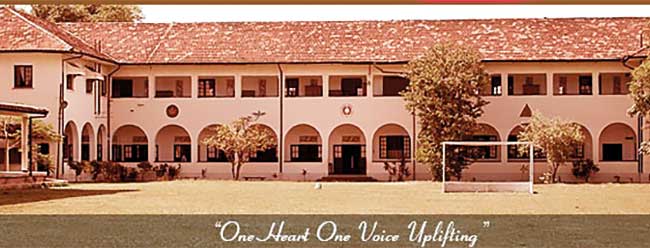
Two weeks ago I wrote in this column about six Britishers
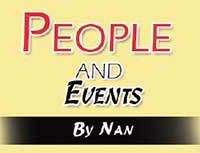 and an American who joined the struggle for Independence in India, most of them coming under the influence of the Mahatma. Titling my article Western Rebels in the Indian Independence Struggle I quoted from an article by Amrit Roy on the historian Ramachandra Guha who received the highly regarded Elizabeth Longford Prize for Historical Biography set me wondering whether Westerners, or more specifically British civil servants, had helped us to gain our independence from their colonial rule.
and an American who joined the struggle for Independence in India, most of them coming under the influence of the Mahatma. Titling my article Western Rebels in the Indian Independence Struggle I quoted from an article by Amrit Roy on the historian Ramachandra Guha who received the highly regarded Elizabeth Longford Prize for Historical Biography set me wondering whether Westerners, or more specifically British civil servants, had helped us to gain our independence from their colonial rule.
Googled and drew next to nothing. Much more productively I asked a historian and an ex top government officer with UN experience who is a source of facts on local history. They said there were no outstanding persons who were traitorous to colonial rule. But they both stated that the country needed to be grateful to some of the Commissions that the British rulers dispatched to our land from the Colonial Office in London.
It would be great if readers could add to the subject by writing about British colonial officers who helped the country. Leonard Woolf got disgruntled with Brit rule much after he served as Civil Servant in Ceylon in the first decade of the 20th century. First bit of information I ferreted out was that one powerful sympathizer was Lord Louis Mountbatten who was here during the latter stages of WW II as SEAC Commander. “His dispatches and a telegram to the colonial office supporting independence for Ceylon have been cited by historians as having helped the Senanayake government to secure the independence of the country.”
One of the two I asked questions from said that the Donoughmore Commission which was responsible for the creation of the Donoughmore Constitution – 1931 to 1947 – helped the country much to get out of the yoke of British rule. The Commission was led by Rt. Hon. the Earl of Donoughmore, PC, (not much more available on him in Internet) and had four British parliamentarians appointed by Sydney Webb, the first Labour Secretary of State for the Colonies.
“Their task was to draft a new constitution that would satisfy the aspirations of all groups within the Island, including British plantation owners, but also enable Ceylon to take its place as a partner in the socialist British empire that Webb envisioned. In 1931 there were approximately 12% Ceylonese Tamils, 12% Indian Tamils,65% Sinhalese and 3% Ceylon Moors, The British government had introduced a form of communal representation with a strong Tamil representation, out of proportion to the Tamil community. The Sinhalese were divided into the up-country and low-country groups.”
The Donoughmore Commissioners arrived in Ceylon in 1927, held 34 sittings. Their most valued recommendation was granting of suffrage to all women aged 21 and above. This was at a time when British suffragettes were still fighting to have the voting age lowered from 28. This granting of the right to vote to all women was not received favourably by all Ceylonese; conservative Tamils not wanting women of the non-Vellala castes being included. This objection was eliminated.
Also, “having noted that the island was riven by power struggles between competing ethnic groups, it devised a system of executive committees that would control all government departments. It rejected the principle of communal representation. The Sinhala conservatives were skeptical and they worked to replace DCs by a cabinet model. This happened in 1947 when the Soulbury Constitution replaced the earlier constitution which ushered independence the following year.”
Hence we see that the Donoughmore Commission helped the country with universal suffrage and education being insisted upon.
Missionaries as benefactors
A conclusion reached by both my informants was that Ceylon was helped most by the missionaries who arrived in the island. Many of them did not come merely to convert the people to their different Christian denominations. When they stayed for some time, they would have been struck by the civility of the people and their cultural level. Hence no treating us as natives to be civilized and no patronage by most of them and no inducing restrictions by insisting on Mother Hubbard dress for women.
Their principal benefit to the people was education in English and more by example than preaching, inculcating certain positives of western behavior. They also encouraged wider access to education whether in English or the native languages. I well remember there was an officer who went around the villages checking on children’s attendance in schools – iskola opisara; compulsory education up to the age of 14 was introduced in soon before and after independence.
None of the missionaries tried changing the culture of the country, whether Tamil or Sinhalese; most appreciated it and positively encouraged its retention in the schools they headed. One instance I clearly remember is of Miss Ruth Allen, Irish Principal – the last of them that Girls’ High School, Kandy, had before the post went to a local educationist – showing her preference for cultural norms of then.
She was to select a little girl to hand over the bouquet to the wife of the Chief Guest at the annual Prize Day. She selected a little one dressed in Kandyan half sari from many who were in elaborate white dresses. Miss Allen would visit homes of her pupils and I know she approved of Mother’s conservative upbringing of my elder sisters, dressed in half sari to school.
Both of those I consulted brought forward an outstanding missionary who influenced the students and teachers of Richmond College, Galle – Rev W J T Small – longest serving Headmaster and devoted to the College and the community. Born 1883 in Boston, Lincolnshire, England, he joined the Methodist Mission after graduation from Cambridge. He was appointed Head of Richmond in 1906 and taught science, math, Christianity. He was a sportsman and disciplinarian and lived very simple.
He served the school till 1922 and then till 1953 in other countries. He devoted much time for the welfare of the community he and the school were within. His love of this adopted home was so strong that he returned in 1956 and lived on Richmond Hill till his death on December 28, 1978, aged 95. He was buried in the Dadalla Cemetery.
Another British missionary who came over was Walter Stanley Senior (1876 – 1938), English scholar, graduate of Balliol College, Oxford University; poet and member of the Church Missionary Society. He was recruited to the tutorial staff of Trinity College in 1906. He was soon appointed Vice Principal and served in that capacity for a decade. Popularly known as the Bard of Lanka, his poems are still popular, most of them in praise of Ceylon.
An interesting tidbit I read was that he officiated at the marriage of George E de Silva to Agnes Nell in St Paul’s Church, Kandy, in 1909. Later he was appointed Registrar of University College, Colombo, and lecturer in Classics. Never of robust health, he returned for a holiday in England 1936., and died two years later.
A letter to a friend has him writing his wish: “The idea has come to me that I should like my ashes – for I contemplate cremation rather than burial – to be interred in St Andrew’s Churchyard, Haputale.” This was fulfilled. “His gravestone is a testament to his life, bearing the plain legend He loved Ceylon preceded by the opening lines of his poem “Lanka from Piduruthalgala”
‘Here I stand in spirit,/ As in body once I stood, long years ago,
In love with all the land./ This peerless land of beauty’s plentitude.
I end by quoting familiar lines of his best known, much admired The Call of Lanka
I climbed o’er the crags of Lanka
And gazed on her golden sea,
And out from her ancient places
Her soul came forth to me….
Senior praises Lanka’s ancient sites and places and ends thus:
“But most shall he sing of Lanka
In the brave new days that come,
When the races all are blended
And the voice of strife is dumb”
What a conclusion of hope; so willfully torn to shreds by our own people.
Features
Africa gaining ground in intra-regional cooperation
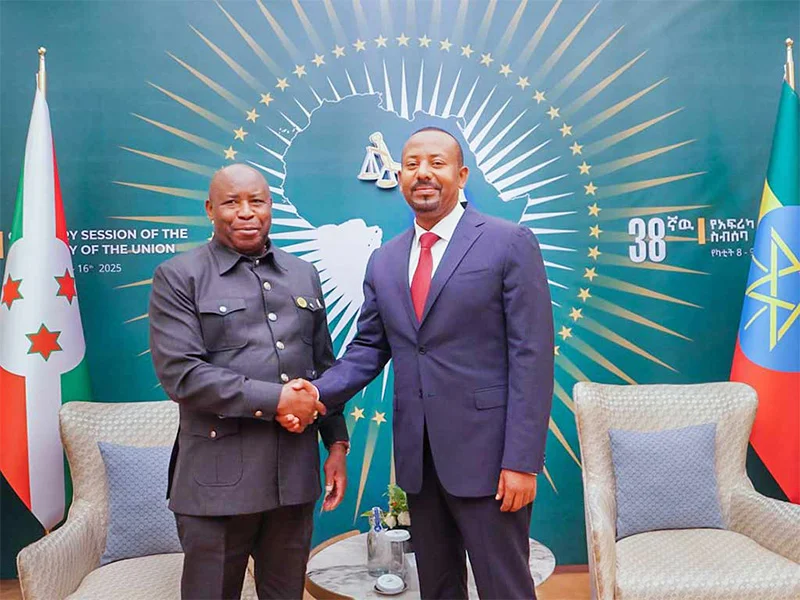
 At a time when the US is veering towards a policy of international isolation, it augurs well for international growth that Africa is emanating signs of stepping up intra-continental cooperation. Above all, Africa is in the process of proving that she could ‘stand-alone’ and be relatively autonomous in her ground-breaking growth drive.
At a time when the US is veering towards a policy of international isolation, it augurs well for international growth that Africa is emanating signs of stepping up intra-continental cooperation. Above all, Africa is in the process of proving that she could ‘stand-alone’ and be relatively autonomous in her ground-breaking growth drive.
Of course such epochal developments should not be construed as meaning that Africa would sooner rather than later be rid of the socio-political and economic bottlenecks that have been dogging her at heel for decades. What they mean is that she is managing these problems in a consistently constructive fashion currently.
We in South Asia in particular need to take note of these developments. This is mainly in view of the fact that SAARC is non-functional. It is not ‘dead’, as a former President of Sri Lanka tried to have us believe, but its virtual paralytic state at present should have discerning sections in the region concerned. It is robust regional cooperation in the fields that matter that helps a country in its growth and development and if SAARC is dysfunctional this is a serious setback for Sri Lanka and the region.
Closer integration into BIMSTEC and ASEAN is certainly desirable but if governments are having Sri Lanka’s best interests at heart it is primarily to the SAARC region that they need to look. For instance, how Sri Lanka is hoping to further its growth prospects by not factoring in stepped-up and positive economic interaction with India and Pakistan, for example, is incomprehensible.
There is a strong regional dimension to any country’s economic growth and unless the relevant regional cooperative mechanisms are rendered operational, the desired level of national development could not be achieved in full. Hence the need to render SAARC fully operational once again.
However, unless and until governments of the region realize the urgency of meeting the above challenge, SAARC would remain in a state inertia. The pressing need is visionary political leadership at the regional level. Right now this is seriously lacking.
It would seem inappropriate and misleading at first blush to attempt to draw comparisons between the vast continent of Africa and the South Asian region in view of the latter’s comparative geographical smallness, but this is more so why Africa’s present exercises in intra-continental cooperation need to be positivey assessed. If Africa could be making some headway in intra-regional cooperation, given her ‘Giant’ status and her seeming unmanageability as a collectivity, why can’t South Asia, a comparatively physically small region? ‘This is the Question’.
While the above and connected matters of importance for regional growth need to be seriously studied by political leaders and policymakers of South Asia, they would be acting in the regional interest by taking a leaf or two out of Africa’s book of cooperative growth and development.
All watchers of international development should feel compelled to take a hard, discerning look at the 38th African Union (AU) Summit held in Addis Ababa, beginning February 15th this year. Interestingly, the Summit theme was, ‘Justice for Africans and People of African Descent through Reparations.’
Coincidentally, erstwhile Namibian leader Dr. Sam Nujoma passed away on the eve of the Summit. Nujoma was perhaps the last of those prominent leaders from Africa who doggedly championed the cause of the libration of his country and of the continent from the shackles of colonialism. More leaders of his ilk are required by the South in general and Africa in particular.
While the acquiring of ‘reparations’ for colonialism’s ravages could prove a very long-gestation project, it is vitally important for Africa and other regions that came under colonial control to keep the issue constantly in focus.
Meanwhile, Africa’s gains in economic cooperation under the AU need to be studied appreciatively by the South and other regions in their interests. Some of the achievements of the AU under the aegis of the African Development Bank (ADB), as outlined by outgoing president of the Bank, Dr. Akinwumi A. Adesina at the Summit were: ‘515 million African lives were transformed over the past decade, including 231 million women, 127 million people gained access to better services in terms of health, 61 million people gained access to clean water, 33 million people benefited from improved sanitation, 46 million people gained access to ICT services, 25 million people gained access to electricity.’
Reports said that the Summit also, among other things, adopted the ‘African Financing Stability Mechanism’. Under this arrangement, $20 billion in debt refinancing will be provided for African nations. This will happen alongside the adoption of the ‘Strategic Framework on Key Actions to Achieve Inclusive Growth and Sustainable Development in Africa Report’.
The Report outlines key actions for Africa to ‘Achieve and sustain an annual growth rate of at least 7% of GDP over the next 5 decades.’
The above are a few aims that the AU intends to achieve going forward for the whole of Africa. But they are sufficient evidence of the current effectiveness of the collective organization. We see here a notable example in South-South cooperation which is a dire need today in the developing world.
South-South cooperation is the way to go particularly in consideration of the US’ current policy of virtually ridding itself of the past policy of helping the South by way of development assistance. Instead of bemoaning the fact that institutions, such as USAID, will be almost no more, the South would do well to take a hard look at Africa’s success stories in helping itself with little or no external assistance.
The discontinuation of US assistance needs to be seen as the proverbial ‘blessing in disguise’ by the South. Here is an opportunity for the Southern hemisphere to finally rid itself of those neo-colonial umbilical binds that have been preventing it from achieving genuine national liberation.
To be sure, the South is not going to meet with spectacular success by adopting the African model in the near term. But if the model is doggedly persisted with by enlightened governments of the South some success is certain to accure to the hitherto ‘Wretched of the Earth’, going forward.
Features
Mrs. World Tshego Gaelae …doing it differently

While most of our pageant winners get involved in frivolous activities, during their reign, the 40th Mrs. World pageant winner, Tshego Gaelae, from South Africa, is keen to bring into the spotlight her country’s potential.
Before her departure for the Mrs. World pageant, held in Las Vegas, in the USA, in January, the Lawyer, Entrepreneur, Model and Digital Creator, said:
“I’m so excited to be sent not only as a delegate but a representative of those hopeful hearts that always want to see South Africa’s potential shine and win. I stand on the shoulders of icons, world champions, the Queens that have gone ahead of me, and of the world leaders that continue to ensure our global participation and impact.
“Thank you everyone for the support so far!”

A coke and a smile…with Sprite Cucumber her pick
Referring to the interview for the position of Mrs. World, Gaelae said: “We get to bring our most authentic self to advocate for the causes we want to advance through the most prestigious platform that is the Mrs World Pageant. What an honour to have such experienced judges who care to hear about what I want to achieve.”
The lead up to the prestigious Mrs. World event was doubly exciting for Gaelae as she got the opportunity to display not only her country’s creations but also check out certain nostalgic venues.
“We received the honour of being at the Elvis penthouse suite, at the Westgate Vegas! The space is spectacularly filled with iconic and historic presence, fit for the king that was Elvis Presley.”
The Mrs World participants spent an evening honouring Victoria’s Voice Foundation and Gaelae’s gift to the Foundation was a canvas shirt with President Nelson Mandela’s face printed on it. The shirt can either be worn or displayed in a frame, and Gaelae says she is so glad to have had the opportunity to present a piece of her beloved South Africa.”

The bangles she gifted to all the participants at the Mrs. World pageant
Gaelae went on to say: “I always joke about being Zulu in my past life, but on a serious note, I love the Zulu Culture so much, that I gifted my Mrs. World Pageant Sisters some beautiful bangles.”
They also visited the special Coca-Cola Store in Vegas, and got to taste some interesting flavours. And Gaelae’s pick … “Sprite Cucumber definitely wins for me.”
Mrs. World enthusiastically said that one of the biggest gifts she received out of her Mrs South Africa journey was that of sisterhood, “and it’s so amazing to come to the Mrs. World pageant and find it once again,” she went on to say.
“My roommate was the gorgeous Ishadi Amanda from Sri Lanka! We bonded with no delay, and laughed till we cried! I was literally paired with a sister from another mother.”
Tshego Gaelae also had a special comment to make regarding the article we published about her in The Island of 6th February, 2025.
“Thank you so much for the beautiful article and coverage.”
Features
Activate all that is good for your skin

 Hi! This week, too, I’m giving you some easy to prepare tips to help you achieve all that is good for your skin.
Hi! This week, too, I’m giving you some easy to prepare tips to help you achieve all that is good for your skin.
* Cucumber and Lemon:
Mix equal parts cucumber and lemon juice and apply the mixture on your face (avoiding eyes). Allow it to sit for 10 minutes and then rinse it off. This natural face beauty tip will brighten your skin tone and lighten blemishes, if used on a regular basis. The best aspect is that it is appropriate for all skin types!
* Tomatoes:
Scoop up the pulp of one tomato and apply it evenly on your face. Allow it to dry for 15 minutes before washing it off with warm water … to reveal a naturally radiant skin.
* Green Tea:
After steeping green tea in hot water for about 05 minutes, allow the tea to cool. Transfer the tea to a spray bottle and spray, in short bursts, or place a little amount onto a cotton pad and pat on your face after thoroughly cleaning it.
* Chilled Tea Bags:
A chilled black or green tea bag does wonders for your skin. This natural face beauty technique may rapidly reduce puffiness around the eyes, making them appear brighter and more alert. Place the tea bags on your eyelids and relax for 05 to 15 minutes while they perform their magic.
* Honey:
Applying a small amount of honey to your face every day is an excellent approach to getting healthy, bright skin. Honey’s absorbing properties draw out pollutants from skin pores and help completely cleanse your skin. Honey’s antibacterial effects heal and prevent acne. Honey’s antimicrobial qualities soothe skin irritation and protect skin from bacterial infections. Honey, has remarkable moisturising effects and is also a terrific relief for dry skin.
* Coffee:
Exfoliating on a regular basis improves the appearance of your skin, making it look younger and healthier. For those who enjoy coffee, a homemade coffee scrub is all the weekly nourishment your skin requires. Coffee’s anti-inflammatory qualities minimize redness, irritation, and acne. All you need to do is mix freshly ground coffee beans, coconut oil, and brown sugar to your desired consistency in a bowl. Massage gently in circular strokes over your face, then rinse with warm water. After using an exfoliant, always moisturise.
-

 Sports4 days ago
Sports4 days agoRemarkable turnaround for Sri Lanka’s ODI team
-
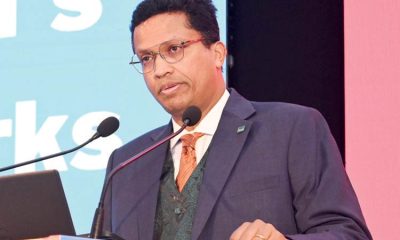
 Business4 days ago
Business4 days agoUN Global Compact Network Sri Lanka: Empowering Businesses to Lead Sustainability in 2025 & Beyond
-
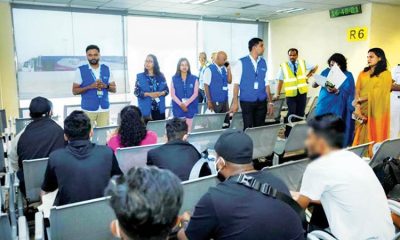
 Features4 days ago
Features4 days agoScammed and Stranded: The Dark Side of Sri Lanka’s Migration Industry
-
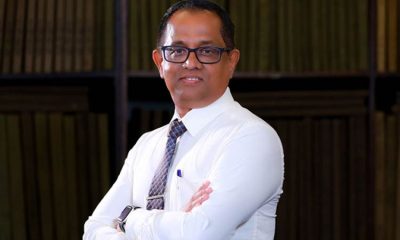
 News5 days ago
News5 days agoSpeaker agrees to probe allegations of ‘unethical funding’ by USAID
-
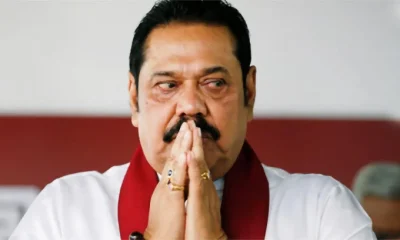
 Features3 days ago
Features3 days agoDon’t betray baiyas who voted you into power for lack of better alternative: a helpful warning to NPP – II
-

 Features3 days ago
Features3 days agoTwo films and comments
-

 Features6 days ago
Features6 days agoClean Sri Lanka and Noise Pollution (Part II)
-

 Editorial5 days ago
Editorial5 days agoCoal giant awakes, but uncertainty prevails











